-
Posts
920 -
Joined
-
Last visited
Content Type
Profiles
Forums
Gallery
Events
Posts posted by drobinson02199
-
-
First layer hull planking started. So far this has gone pretty smoothly. At the stern, the planks need to be twisted with the steamer, but no side bending needed so far. I also had to put some stealers in at the stern just below the initial plank to align things between the laser cut sides and the initial plank, but they will sand/fill out.
Regards,
David
-
Initial bow and stern strips, and initial planking strip, in place. See pic below.
I am posting this because I caught something at the last minute that the instructions aren't clear on, and that would have given me real problems later.
The way the instructions read, you mount two stern laser cut strips first, and then butt the long planking strip up against the end of the second one. There are no instructions for alignment of the end of the second stern strip, so I just eyeballed the second one to look level with the horizontal hull structure.
After I had glued almost all of the long strip, I began to worry about alignment with the deck above, so looked forward in the instructions, and sure enough, the distance is critical (16mm exactly from top of strip to bottom of deck), in order to fit a photo-etched piece in. What actually governs that distance is a set of very small notches in the frames, but they are easy to miss and I did.
So I pulled up the long strip (fortunately the glue hadn't completely cured), and repositioned it exactly 16mm below, using the notches I could find after the rip-up, and a ruler for the rest.
The way it should be done is to use a planking strip, dry-fitted under the notches, as the master guide, and align the stern strip end with that, and then finish out to the bow. I'll do that on the second side.
There is no mention of the notches in the instructions, but they are obviously critical, so that's a big miss in the instructions.
Regards,
David
- Tom E, yvesvidal, popeye the sailor and 1 other
-
 4
4
-
Getting ready for hull planking. In looking at how the frames align with the decks, I noticed that frames 6 & 7 fall short. If you look at the first pic, you'll see that the original frame is short -- not flush -- even after the laminated wood I added to bring the frames out.
So I added some additional wood strip to bring these flush, which is what is required by the planking scheme. See pics.
Regards,
David
- lmagna, zappto and popeye the sailor
-
 3
3
-
Chris:
They are very narrow. As to length -- well, I have to confess that I didn't used fixed length planks on this one. I just ran the planking at full length, cut, ran the leftover the other way, butted in a new full length plank, and so forth.
Simple reason -- a huge amount of this deck will end up being covered over. I'll likely slow down and do fixed length alternating planks on the upper decks.
Regards,
David
-
- puckotred, vossy, GrandpaPhil and 4 others
-
 7
7
-
Yes, the height to the top of the masts is 290mm. It's 215mm to the top of the stacks.
Regards,
David
-
I took another look at the plans and instructions, and after the step-by-step instructions finish with the first photo book (pp 1-31), they start to reference the plan sheets, and when they do, all of the fittings and deck structures come into play, including the PE doors and windows.
So there may be a bit more organization: you have to reference the plan sheets to build the cabin structures and apply the printed decoration, but then reference them again for the fittings later on. It looks like leaving them to "later on" may work.
Regards,
David
-
Mr. Pucko:
My first book has 32 pages (back cover of parts pictures is page 32). The second book has 8 pages of photos, including front and back cover, but the important ones are the inside 6, which are all views of deck fittings installed.
If you can't find yours, I'd be happy to send you some hi res pics of my pages, since there aren't that many. Let me know.
By the way, when I went to assemble the parts under the poop deck, I was going crazy trying to find cast metal ventilator housings, until I finally saw that the fan housing is made of wood (while the other parts are metal). Easy to miss if your eye is looking for metal.
Regards,
David
-
Here's a shout out to Mr. Pucko for his comment about getting PE parts and other detail onto the ship as I go. He's right -- the instructions don't mention it, and so I looked hard at the plan sheets, and saw that the parts are indicated there. What's deceptive is that the very good picture book doesn't show these things installed as the build progresses. It isn't until you get to the second book, which shows all the deck fittings at once, that they show up in the pics. And as Mr. Pucko suggests, at that point the installation would be much more difficult because of access restrictions.
So here are two samples of what I went back and picked up. And now I'll study the plan charts carefully as I build, and look for details.
Regards,
David
-
Gorgeous work. Wonderful neat ratlines!
Regards,
David
- zappto and Old Collingwood
-
 2
2
-
Zappto -- Two layers, sort of. A base layer, followed by narrowly spaced strips.
Regards,
David
-
Another cabin structure built and decorated.
I did this one differently. The manual says to build the structure, then cut out the pieces, and then glue them on. That leads to mis-fitted decoration pieces.
So I used the cabin wall sections as templates to cut out the decoration pieces with a knife, then mounted the decorations to the loose wall pieces, and THEN built the walls. In the pic below you can still see imperfections, but to the naked eye it looks better than the one below it. Just takes a lot more forward planning.
Regards,
David
- zappto, hof00, popeye the sailor and 4 others
-
 7
7
-
More progress with one more cabin wall done and all of the previously planked decks mounted.
To address Chris's question: what you see is paper decoration glued onto the walls. Pic 4 shows it up close and you can see the imperfections at that distance. Pic 5 shows it at a more normal viewing distance.
I would have preferred one continuous strip to mount so that there would be no seams between the pieces, which (at least for me) were unavoidable -- particularly on some very small pieces. But once the deck is mounted over the cabin walls, it looks fine (at a normal distance as I said).
Re the decks: I'm clear coating them, which is the way they have it in the manual.
Regards,
David
- GrantGoodale, BenF89, yvesvidal and 3 others
-
 6
6
-
- channell, GrantGoodale, hexnut and 9 others
-
 12
12
-
lgfrench -- I'll do it. I have always wondered why we don't see them posting in our model pages on this site, given how much feedback they could get. I wonder if they even follow their model builds.
Regards,
David
- lmagna and popeye the sailor
-
 2
2
-
Chris -- If you look above in this thread, you'll see a post by lgfrench (who originally sent me the links on this) saying that he contacted Ages of Sail this past summer on this, and they contacted Amati and got nowhere. Ages of Sail is Amati's official distributor in the US.
I don't think I've built a kit yet that didn't have some issue in the wood or the instructions. My HMS Fly had a serious lack of wood in some areas, which I was able to fix with my spare wood pile. On the other hand, the Revenge, a newer Amati kit, had tons more wood than was needed in all categories. I should admit that I'm paranoid about running out, so I really conserve wood as I go.
Thanks,
David
- lmagna and popeye the sailor
-
 2
2
-
Chris -- She looks really terrific. How long is she?
Regards,
David
-
Dave:
It is large, but I've seen some large ship models (like the Mantua Le Superbe and others) that are as large. I do have a large shelf, or I may mount it over the TV in my office.
It comes with the smaller number of boats.
Regards,
David
- popeye the sailor, zappto and Kevin
-
 3
3
-
The basic hull framework is done, and it goes very smoothly. The laser cuts on the plywood are really well done and everything fit together without sanding or forcing. It's 42 1/4 inches long.
The first two pics show the overall frame structure. The third one is the best of my attempts to show the adjusted bow bulkheads along with the line of the overall ship. When I sight down the hull, I think frame 5 has a bulge that's too far out -- and that may be because of the issue of printing/sizing the templates -- but it will be easy to adjust when I fair the frames for planking.
The darker laminate makes it easier to compare the original line of the bow with the new line, and I like the new line much better.
Regards,
David
-
Yes, and since the new bulkhead templates were developed by the Titanic Research and Modeling Association, I felt they were credible and went with them.
For a kit this significant, it would not be too hard for Amati to produce a laser cut of the new bulkheads (only 6) and ship it out to their main distributors (like Ages of Sail) as a free mod to the kit. I would have struggled with this if lgfrench had not taken the time to lead me to the mod.
Regards,
David
- lmagna and popeye the sailor
-
 2
2
-
Great point, Chris, and thanks to Mr. Pucko for the follow-up.
I guess I'll find out. Building this kit will be an adventure, and let's just hope I don't hit an iceberg! 😵
Regards,
David
- popeye the sailor, 14Boats and CDW
-
 2
2
-
 1
1
-
To Greg and Popeye's comments: when I started this approach I thought I'd be in for a very long slog, as you both have expected.
But as it turns out, using my steamer and doing two at a time (so the glue for one strip dries on one bulkhead while working on the other) makes the work go fairly quickly. Here's a pic of bulkheads 6 and 7.
Now I just have 3, 4 and 5, which have decreasing amounts of fill going from 5 to 3, so those should go fairly fast as well.
As this will end up, to my surprise it's no more time than I'd have spent sourcing 4mm ply, buying the saw I don't have, and then shaping the pieces with all of the cutouts.
Regards,
David
-
Don:
Thanks. I think I'll do that just to be safe. But they feel pretty strong. They are walnut (hardwood), and each layer is glued with CA gel, so the whole thing feels pretty solid. But I'd hate to discover the opposite during fairing, so the wood support is a great idea.
Regards,
David
-
I've now had a chance to look at and deal with the bow bulkheads.
First off, I want to repeat kudos, high fives and thanks to lgfrench, who forwarded me the post on this issue, and also the template showing how the bulkheads need to be adjusted.
I started with the template. When printed the diagrams aren't to scale, so I ran it through Photoshop to isolate an individual bulkhead template (in this case, bulkhead #8 which has been my test case). I then printed that at different sizes until I got one where the "kit bulkhead" outline in white matched the actual bulkhead in hand. (see picture below).
I don't have a jigsaw -- not even a coping saw -- and I don't have any spare 4mm plywood, but what I do have is a lot of leftover wood strip from previous models -- including a supply of 4mm wide walnut strip.
So I decided to take the approach of laminating the strips onto the bulkhead and then each other, and the rough result of that is on the second picture. The third picture shows what it looks like when sanded down to match the red outline on the template.
So that's one bulkhead -- and once I started working with my steamer and came up the learning curve things moved along more quickly.
So now 5 more to go.
Regards,
David



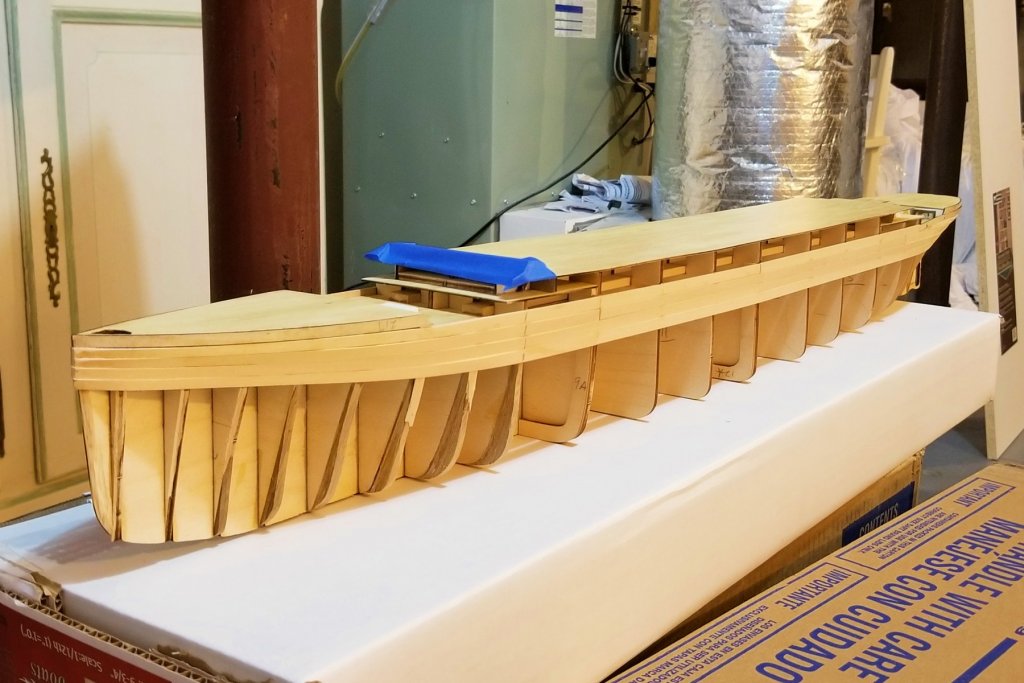
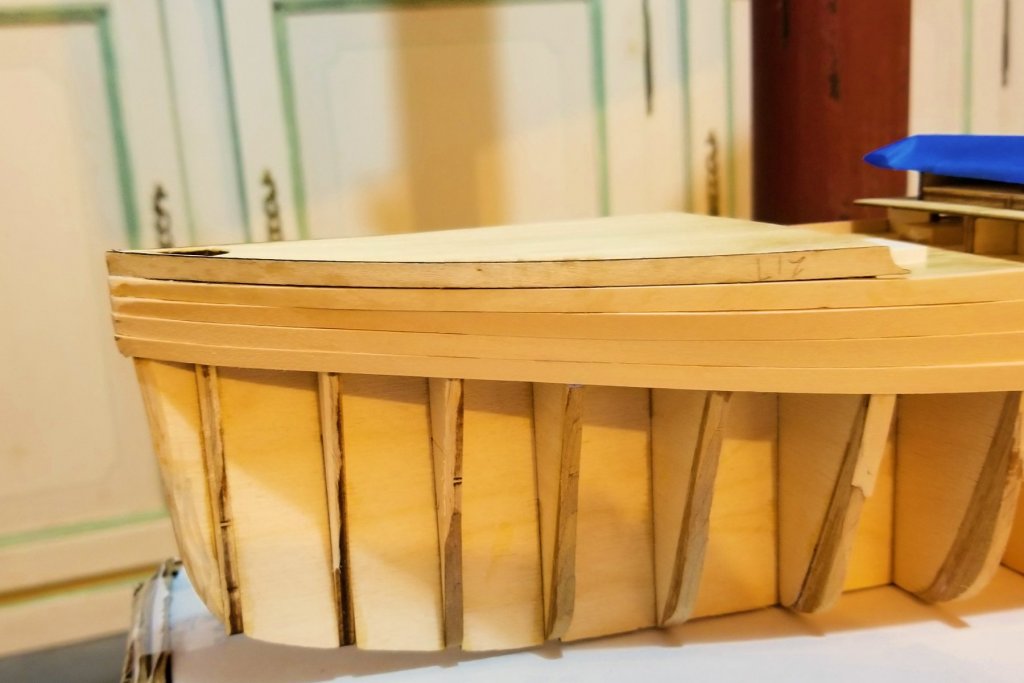
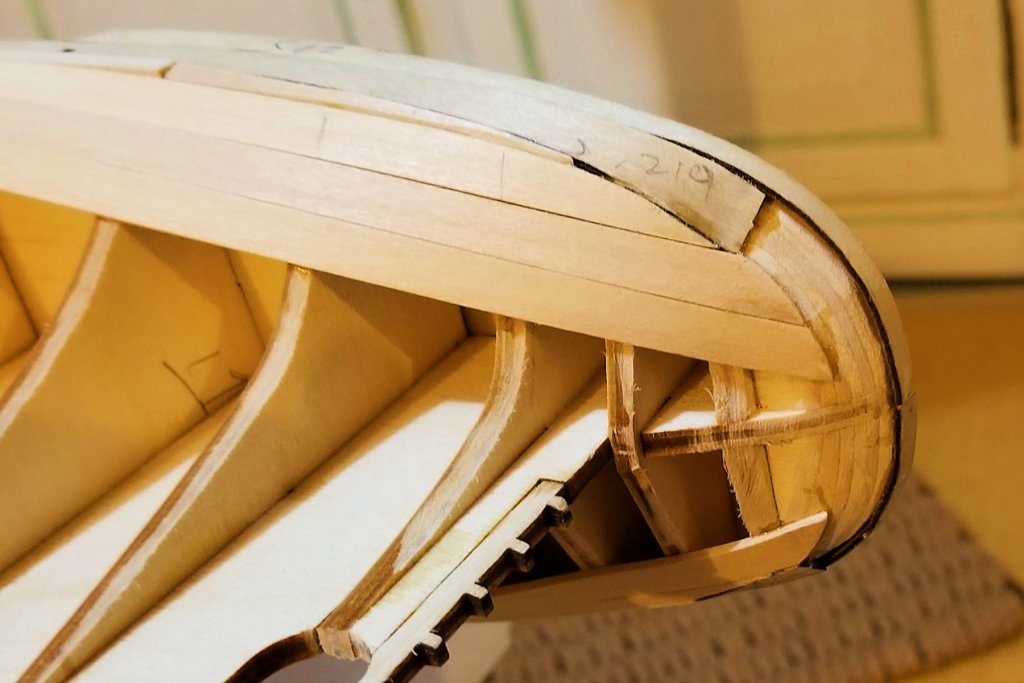
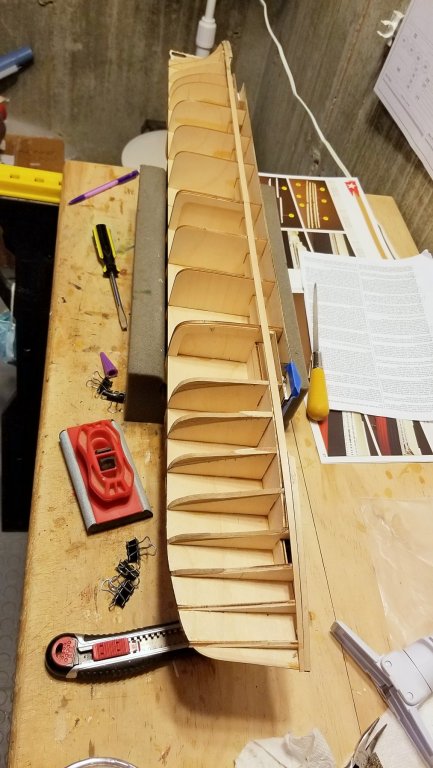
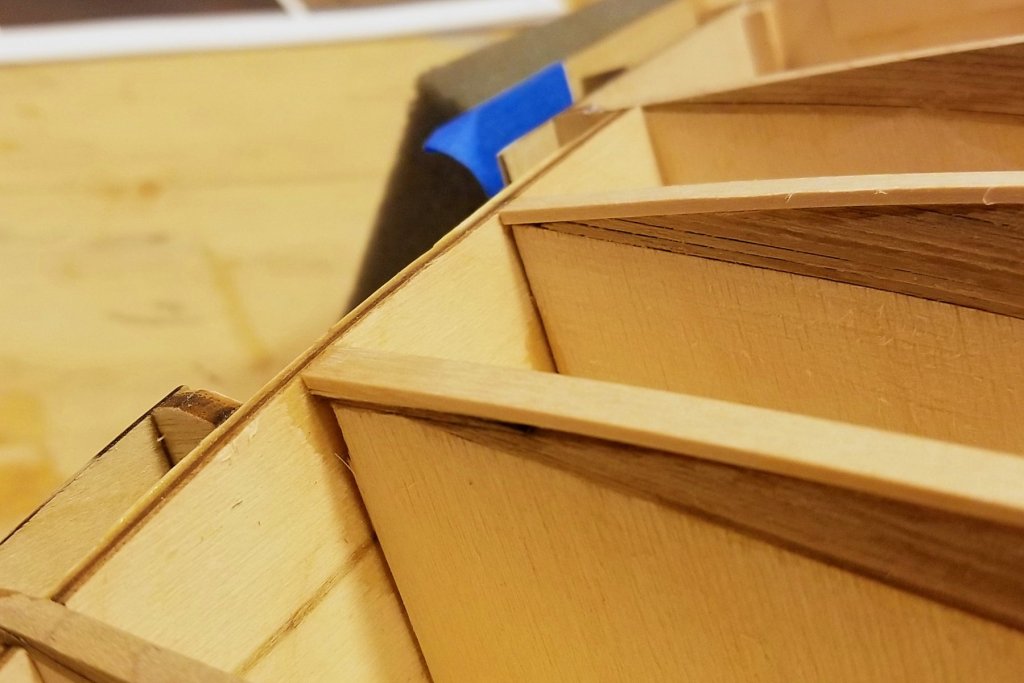
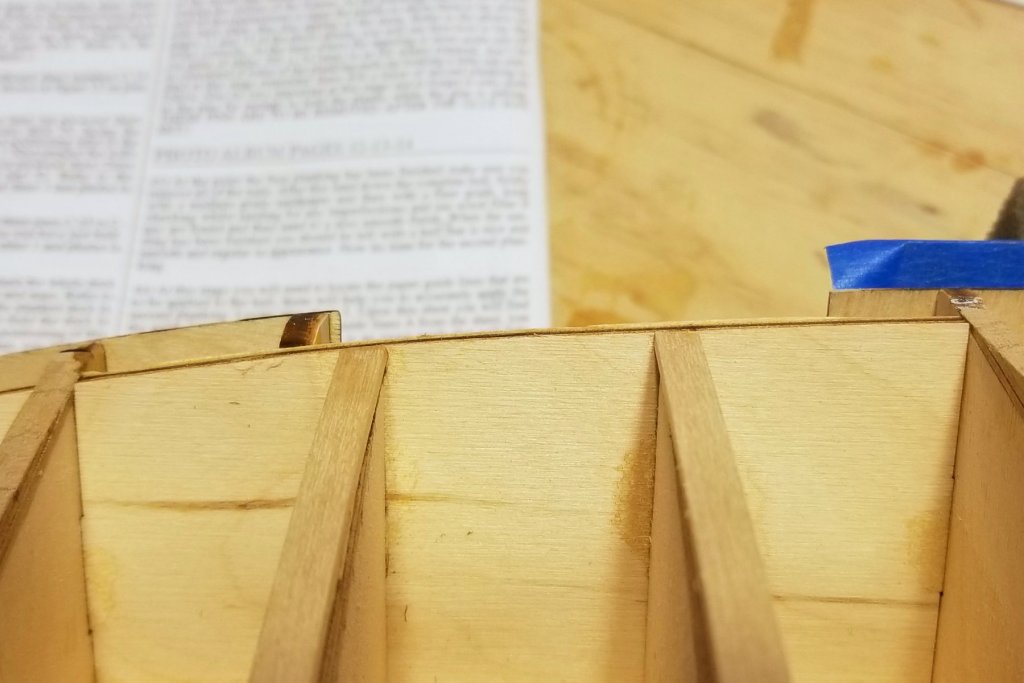
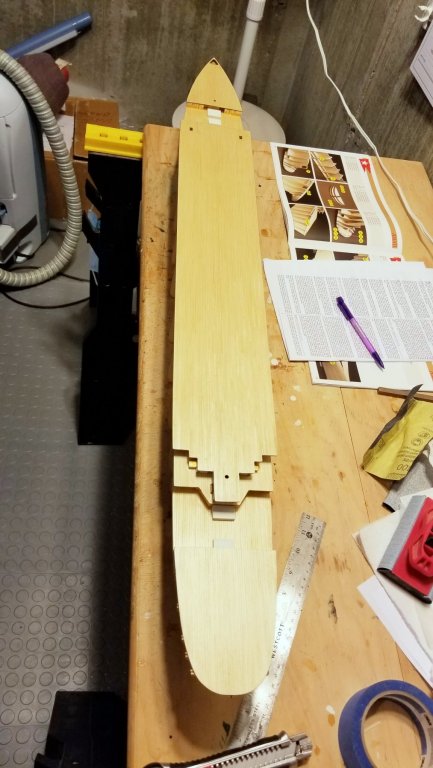
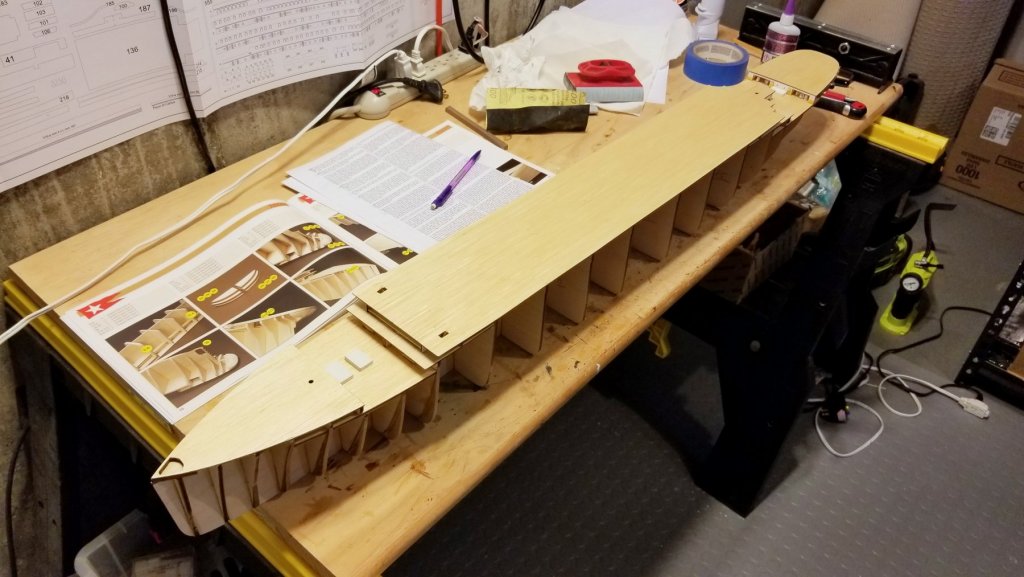

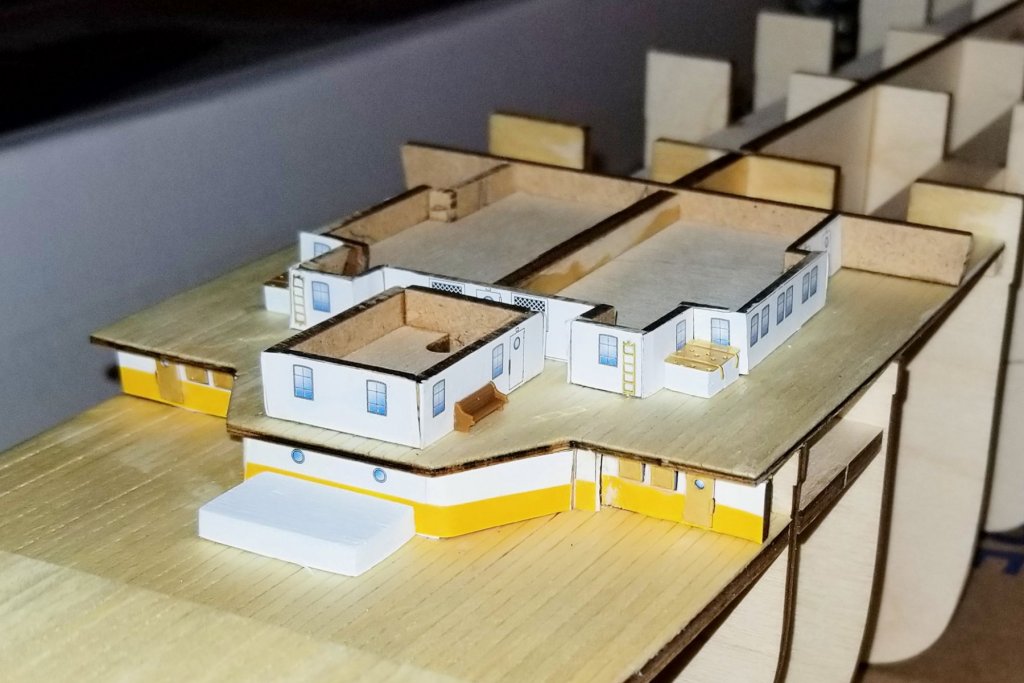
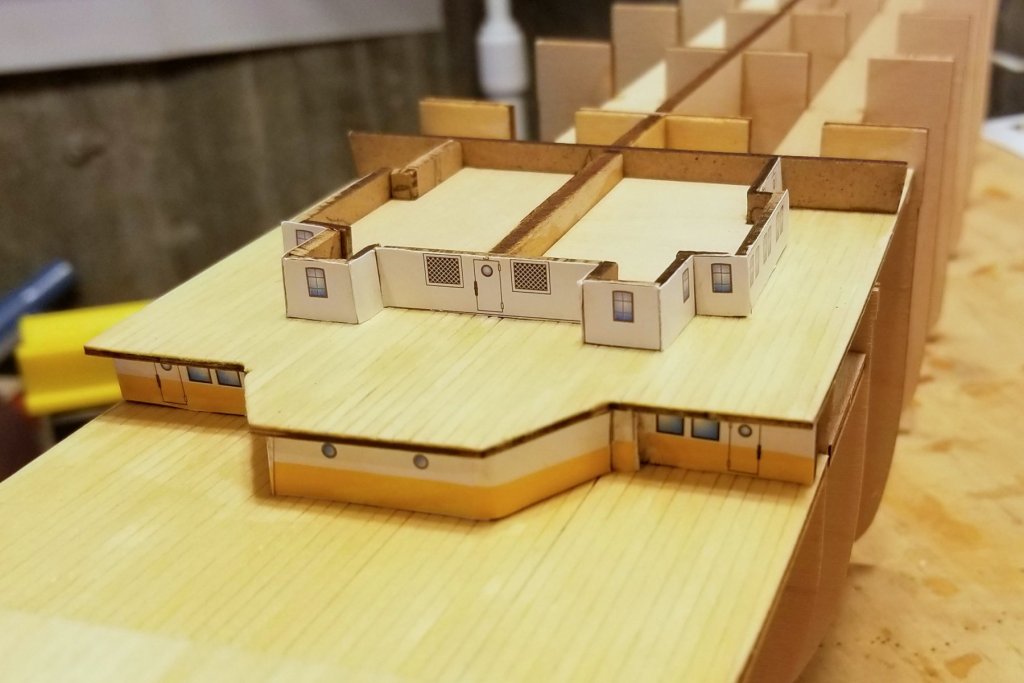
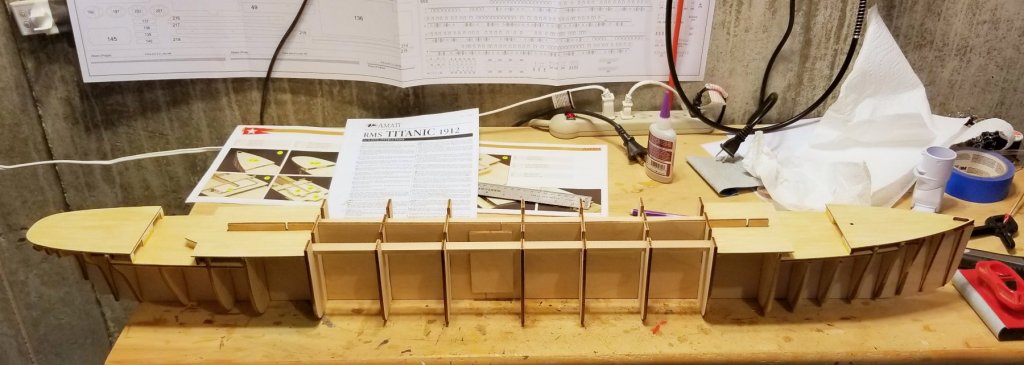
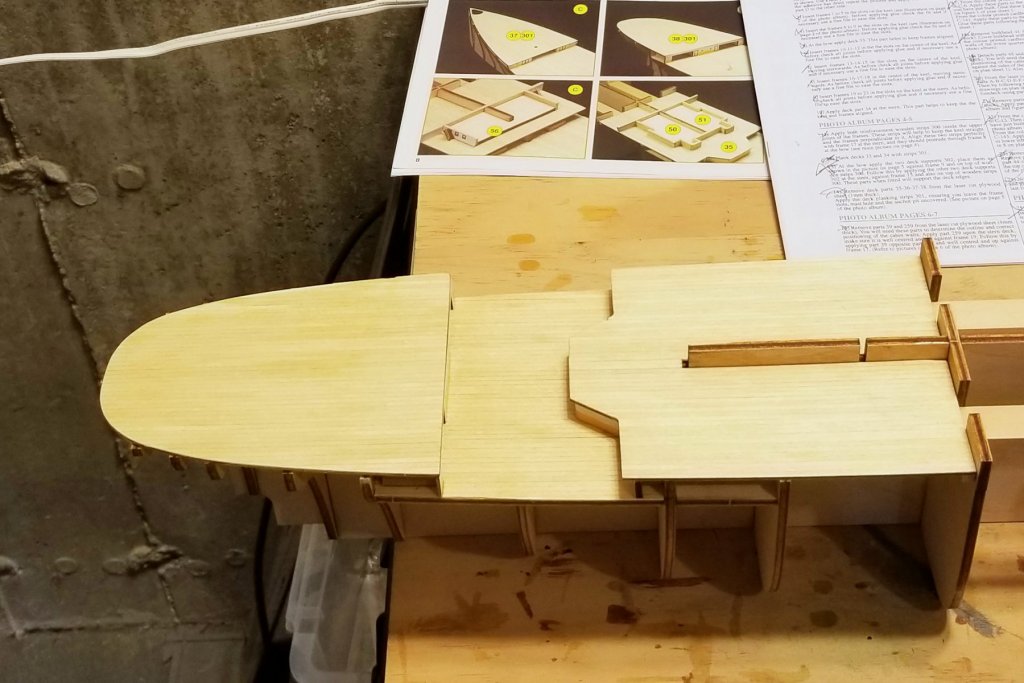
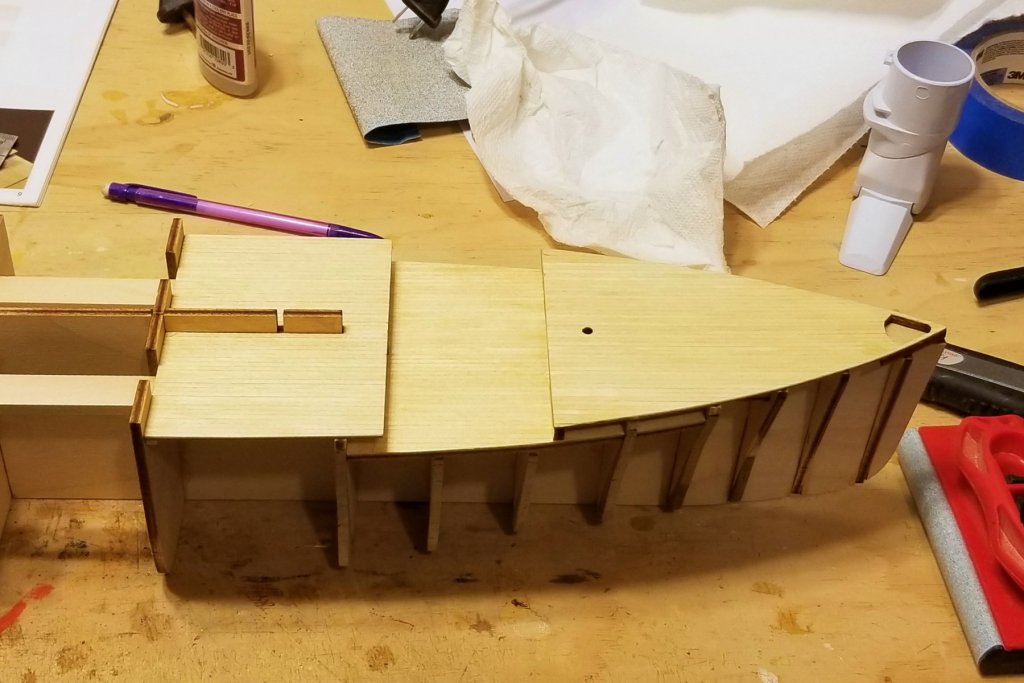
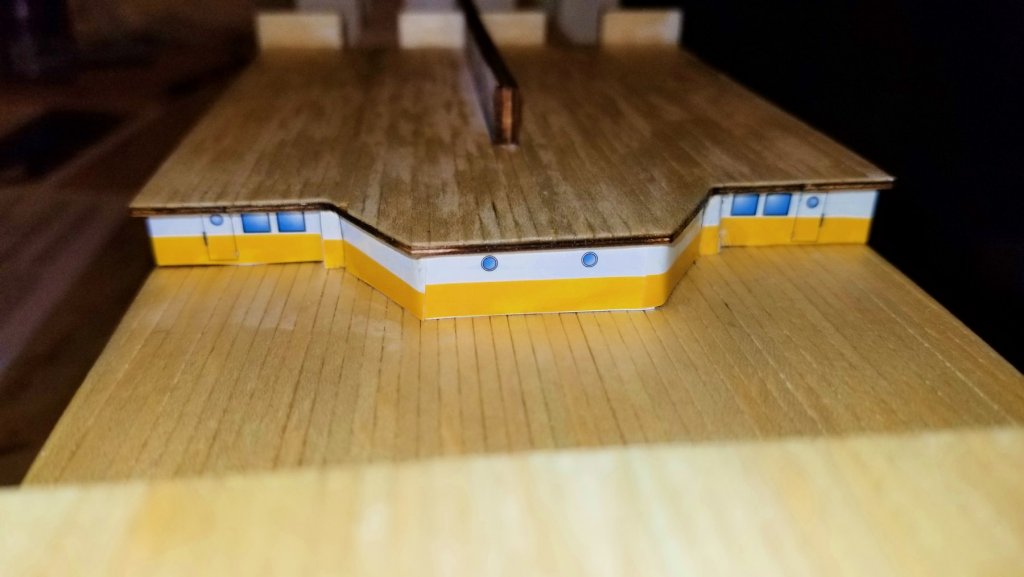
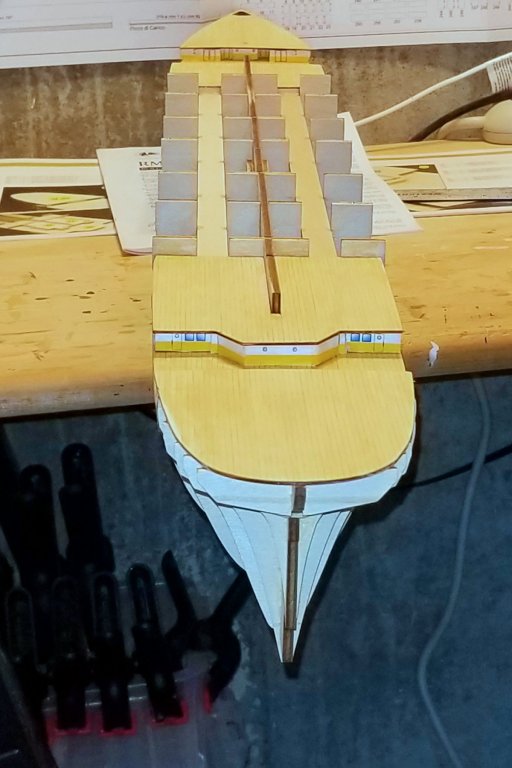
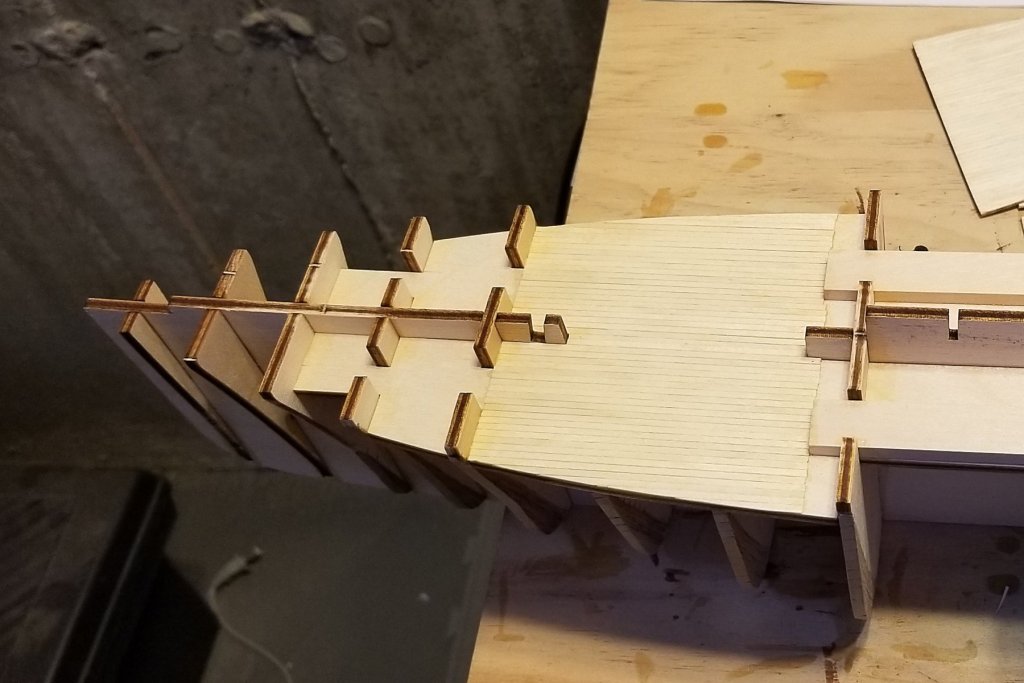
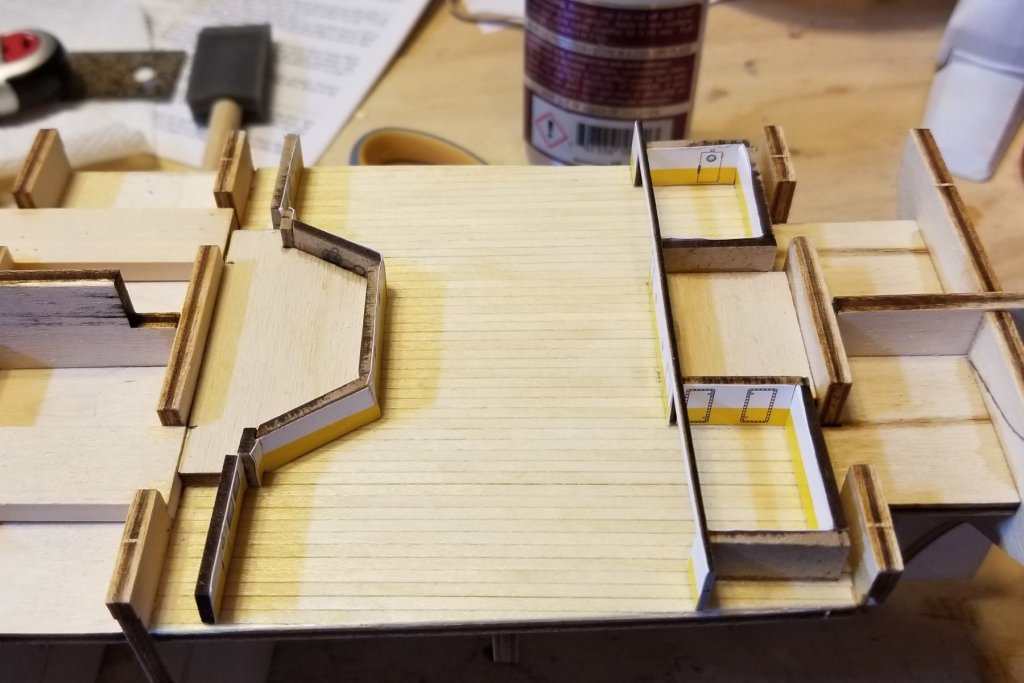
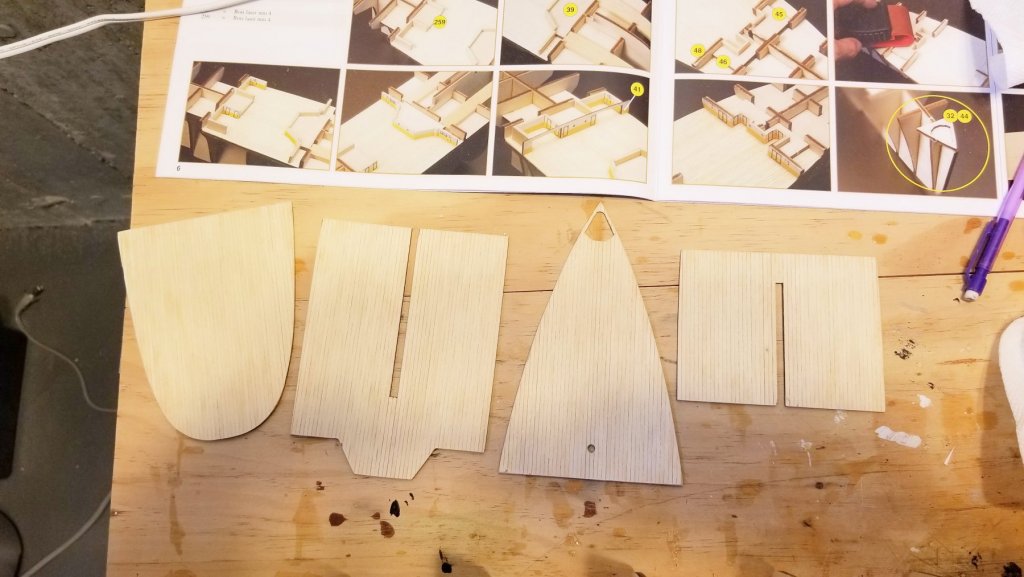
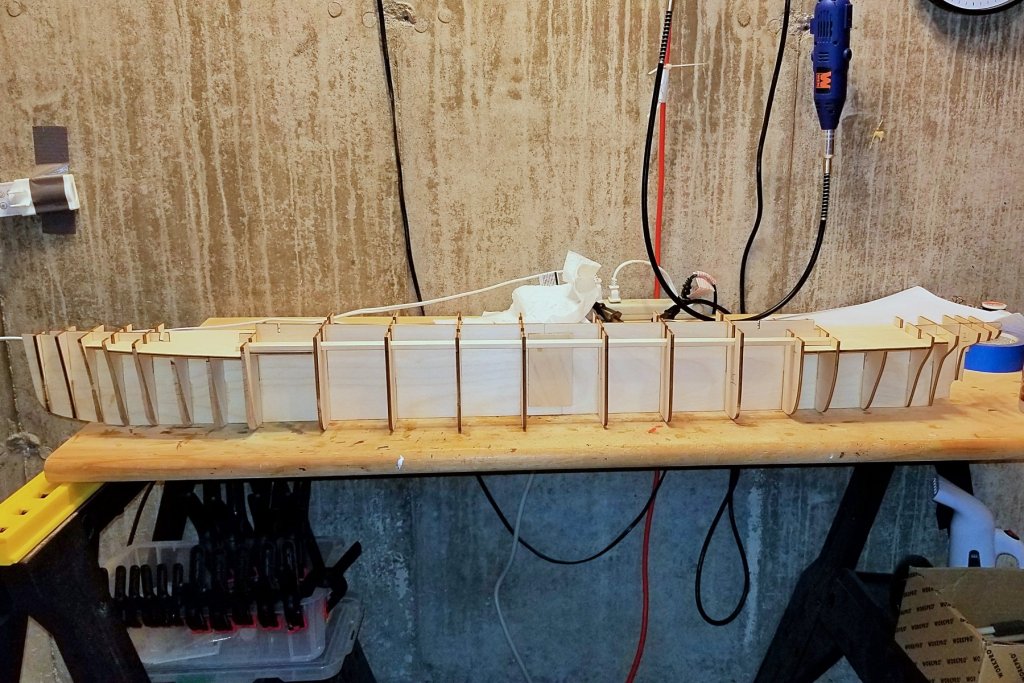
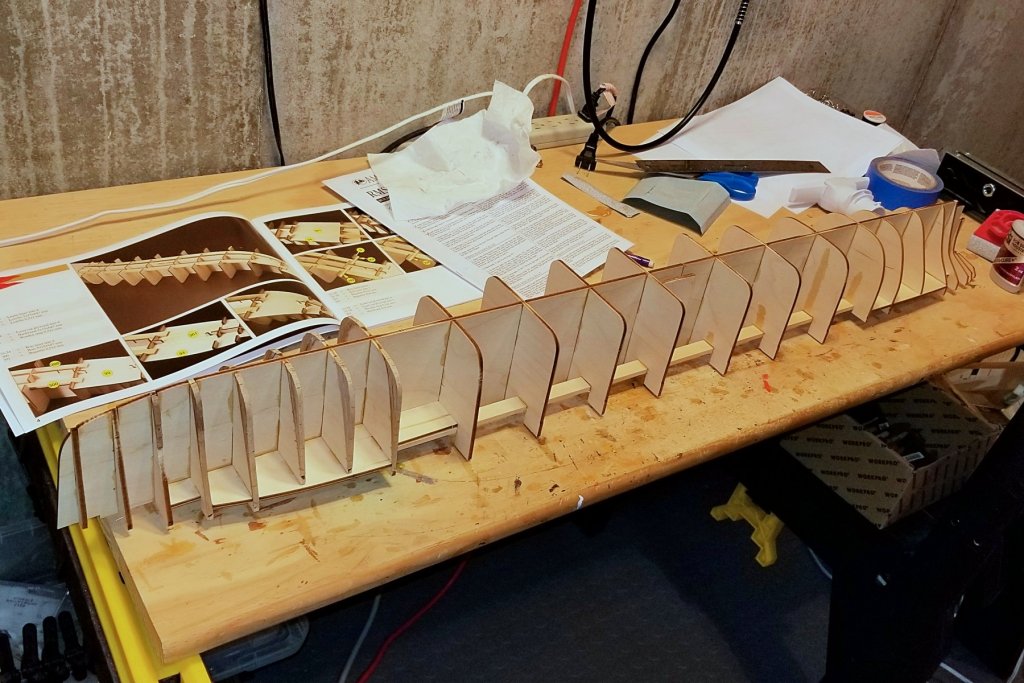
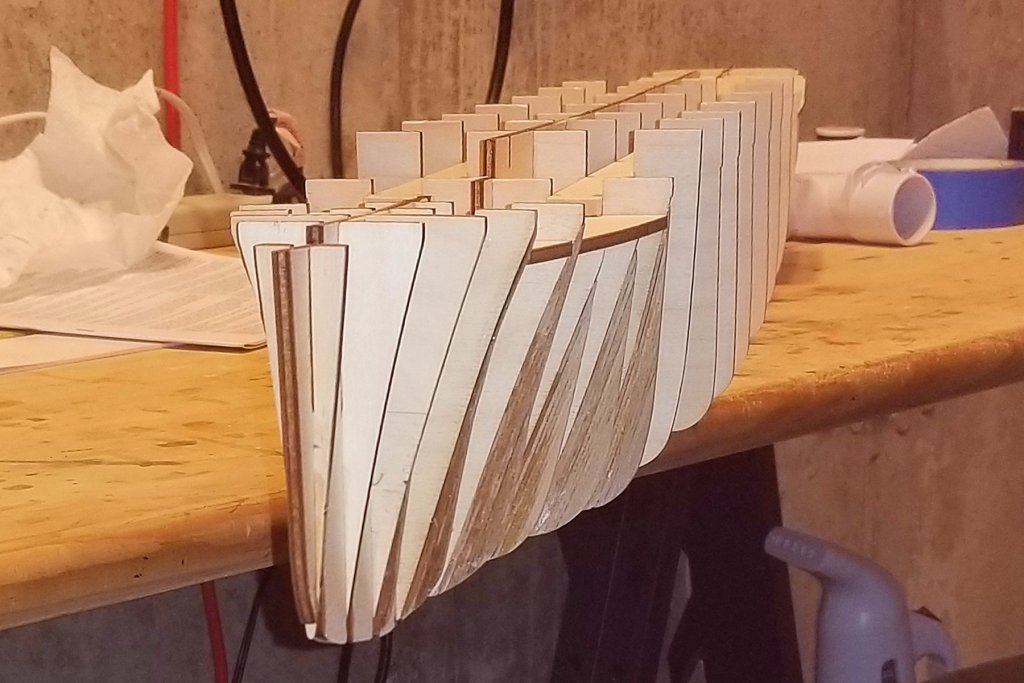
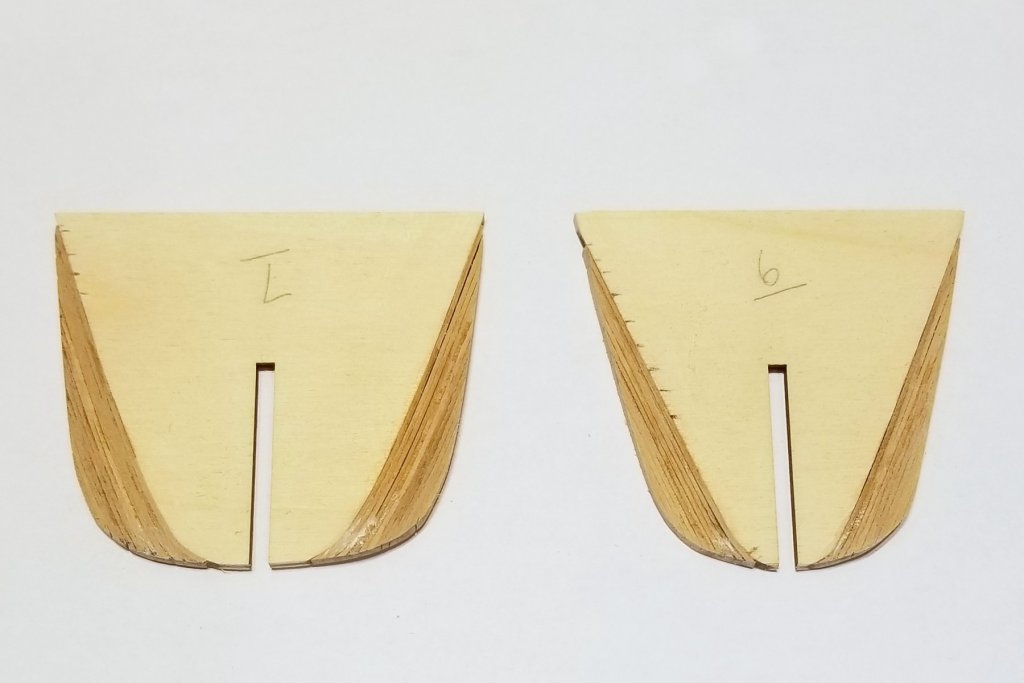

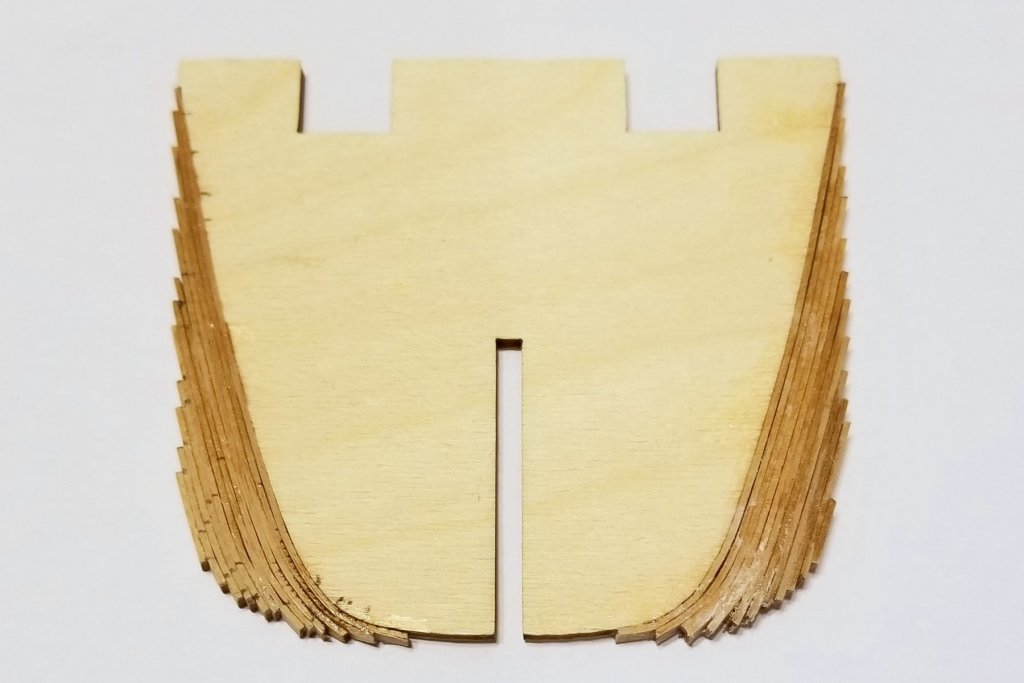
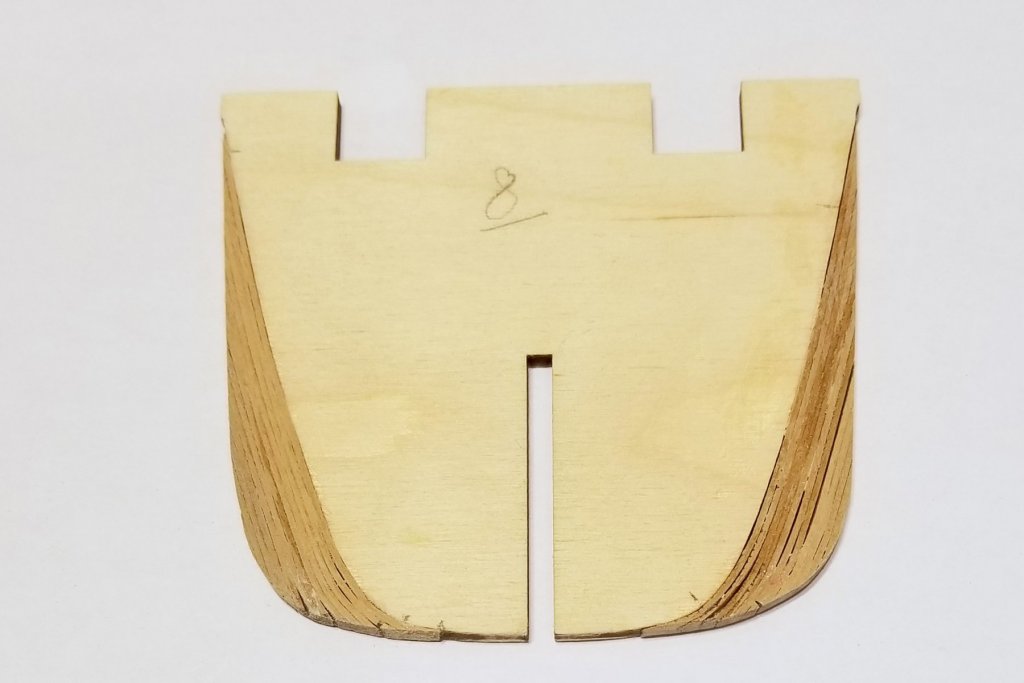
RMS Titanic 1912 by drobinson02199 - FINISHED - Amati - Scale 1:250
in - Kit build logs for subjects built from 1901 - Present Day
Posted
Popeye:
It does get a filler, later on. It consists of trapezoidal wedges of planking fitted into the semi-circle. I've been taking care to shape the ends to create a smooth circle so I won't need too much wood filler once the wedges are in.
Regards,
David